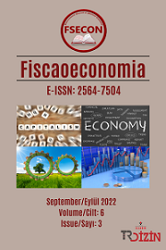NATO Ülkelerinde Kişi Başı Askeri Harcama Yakınsaması: Nahar-Inder Yakınsama Testinden Kanıtlar
NATO Ülkelerinde Kişi Başı Askeri Harcama Yakınsaması: Nahar-Inder Yakınsama Testinden Kanıtlar
Author(s): Şekip Yazgan, Cihat KarademirSubject(s): Recent History (1900 till today), Environmental and Energy policy, International relations/trade, Security and defense, Political economy, Economic development, Peace and Conflict Studies
Published by: Ahmet Arif Eren
Keywords: Military Expenditure; Convergence Hypothesis; The Nahar-Inder Convergence Test;
Summary/Abstract: It is seen that the burden-sharing debates between NATO member countries have come to the fore at various periods and with different intensities, depending on the changes in the international arena, from the post-cold war era to the present. In this context, studies investigating the convergence behavior for military spending levels of NATO member countries occupy an important place in the relevant empirical literature. This study investigates the existence of stochastic convergence in terms of military expenditures per capita in NATO countries in 1960-2020 using the Nahar-Inder (2002) convergence test approach. The Nahar and Inder (2002) convergence test is expressed as a polynomial type test that allows determining countries that act differently in a sample with the same behavior. Nahar-Inder’s (2002) convergence test also shows that output differences may exhibit convergence behavior even if the series under consideration are not stationary. In this study, the findings obtained using the Nahar-Inder (2002) test, which is based on time series analysis and allows for decomposing intra-sample mobility, show that 13 countries in the sample, except Belgium, Portugal, and Norway, converge towards the sample mean.
Journal: Fiscaoeconomia
- Issue Year: 6/2022
- Issue No: 3
- Page Range: 1194-1211
- Page Count: 18
- Language: Turkish

